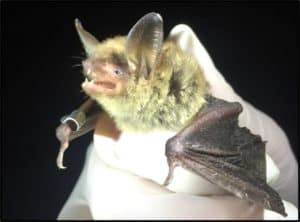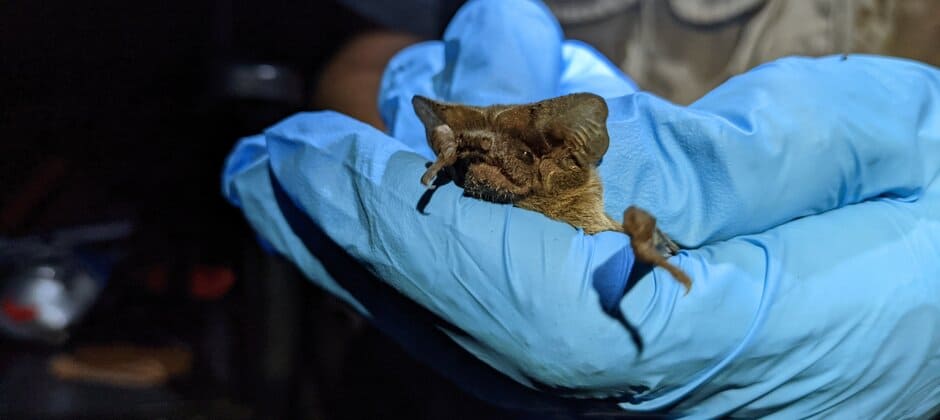Share this article
Early treatment the best way to protect bats from WNS
Wildlife managers looking to prevent widespread losses of bats to white-nose syndrome need to treat the fungal disease early and intensely.
White-nose syndrome, a deadly disease caused by the fungus Pseudogymnoascus destructans, has swept through North America in recent years, killing off entire bat populations. Bats that hibernate communally in large numbers are particularly susceptible to the disease.
Wildlife managers have employed a number of different strategies to fight white-nose, including everything from vaccines to tinkering with the temperature of some caves and mine shafts that host colonies. Some have even tried applying a kind of topical bacterial solution to bats to prevent the spread of the fungal disease.
But Jack Grider, a postdoctoral researcher at Colorado State University, and his colleagues wondered how long it would take to reach a target goal using the various treatments applied in the past. For a study published recently in the Journal of Applied Ecology, the team used a model initially developed by co-author Robin Russell from the U.S. Geological Survey to determine what was needed to keep white-nose at bay.

Northern long-eared bats (Myotis septentrionalis) are particularly affected by white-nose syndrome. Credit: Jack Grider
As a test case, they used populations of little brown bats (Myotis lucifugus) found in New York state and Vermont. They examined how various treatments that took place over different periods of time, with different intervals, would affect the spread of white-nose.
In all of the treatments and simulations they ran, the researchers found treating bats early when a population became infected with the fungal disease was one of the most important factors.
“You’re better off getting there early and treating as many individuals—as big of a hibernaculum—as you can find at the time,” Grider said. “If you’re not getting there in the early stages of infection, your return in investment can be really low.”
It’s also important to maintain a high level of treatment, the models showed, when the strategy involves treating individual bats. “You have to be willing to stick to the same plan for an extended period of time to save a good portion of the population,” Grider said.
In the future, Grider would like to expand the model to determine the ultimate financial cost to control white-nose in a given population. This kind of information can help wildlife managers determine where to focus limited amounts of conservation dollars.
Header Image: Researchers look for evidence of white-nose syndrome on a Brazilian free-tailed bat (Tadarida brasiliensis) at Rattlesnake Springs in New Mexico. Credit: Erin Lynch/NPS








